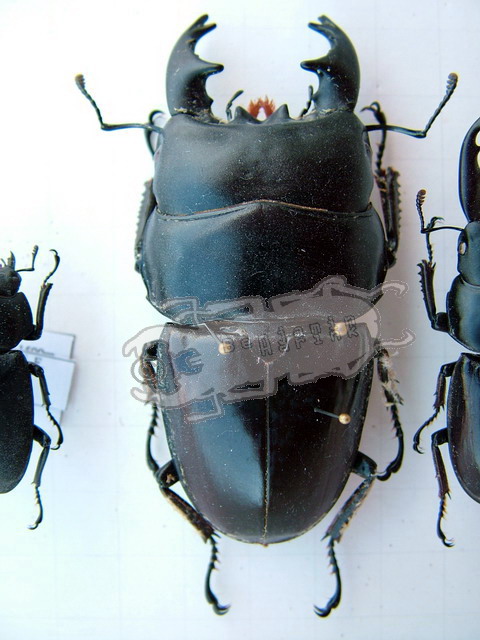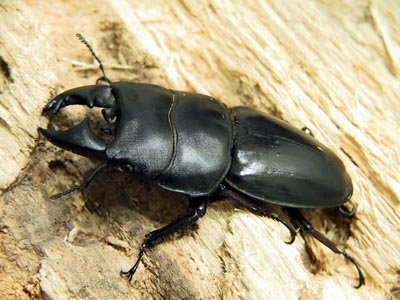Distribution:
Indonesia
Breeding hints:
Dorcus alcides is rather easy to breed. The females lay eggs into relatively hard white rotten wood logs. The larvae can be reared in these logs or be separated and fed with white rotten wood pieces stuffed into containers. Big specimen are commonly reared on kinshi fungus. For the rest of the world who are not priviledged enough to have kinshi available, the larvae can also be reared on fermented saw dust with an additional feeding of proteins. This way it is also possible to raise reasonably sized specimen. Larvae can be cannibalistic at times, especially under crowded conditions and should be separated. Since males can be very aggressive, it makes sense to pair male and female under supervision and separate them afterwards.
Interesting Links:
Please suggest links that offer more information about this species
Specimen Pictures:
Pictures of living specimen:
All Pictures © Copyright of their respective owners.
Design and Text © Copyright of Benjamin Harink, any use is strictly prohibited, for details contact: hankypanky79@hotmail.com



Hi Ben,
I’m a Korean breeder and have a question
on the breeding of Dorcus Alcides.
Recently I have got a pair of wild alcides
I do certainly believe that they are mature enough
to be bred right away.
I have long heard about the aggressiveness of the
male, so I tried the hand pairing .
I’ve seen them mating but it was just few seconds
so I tried several times more and they just wont do it.
What should I do? should I just keep them together
till the female lay the eggs? im afraid that it might get killed
but im not quiet sure whether that case happens
highly
thanks
Dear Kim,
thank you for writing. I think there is a very good trick to prevent the killing of the female – I think Japanese first came up with it. You can use some wire to tie the mandibles of the male, so that it cannot ‘bite’ the female.
However, if they are wild caught, the female most probably is already mated and you can try to set her for egg laying.
I noticed with wild caught Dorcus pairs, that the females sometimes are different species. For instance, I once received a pair of Dorcus reichei from Malaysia. No matings happened, but the female luckily laid eggs. When the F1 hatched, I realized that the beetles were D. parryi instead.
I hope this helps
Warm regards
Ben